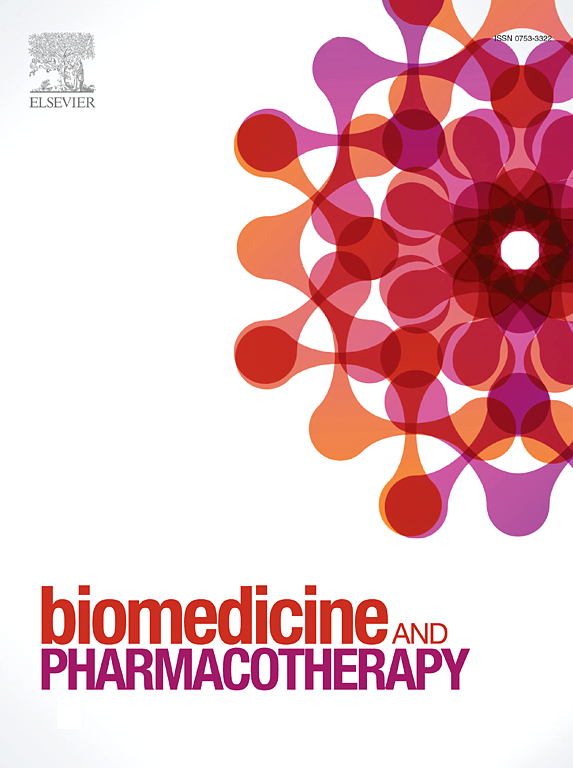抗糖尿病西格列汀通过影响祖细胞影响组织再生
IF 7.5
2区 医学
Q1 MEDICINE, RESEARCH & EXPERIMENTAL
引用次数: 0
摘要
糖尿病可能对组织的再生能力产生不利影响,包括皮肤愈合和骨骼健康(骨质疏松症)。二肽基肽酶-4 (DPP4)抑制剂(DPP4i)是一种抗糖尿病药物,可以增加肠促胰岛素的半衰期,改善血糖水平。一些调节重要生理过程的蛋白质也是DPP4的底物。因此,DPP4i可能具有多重作用。这项工作的目的是研究DPP4i西格列汀是否影响糖尿病动物模型的再生能力。因此,评估其对皮肤伤口愈合的影响。同样,如果它产生血清成分的变化,可能会影响内皮细胞和间充质干细胞(MSC)的活力和分化。方法采用西格列汀治疗糖尿病大鼠背部损伤。第6天,流式细胞术定量血中CD34+细胞和内皮祖细胞(EPC)。第14天,取血清和创面标本进行组织学分析。体外研究了人脐静脉内皮细胞(HUVEC)的活力、凋亡和血管生成以及MSC向脂肪细胞或成骨细胞分化的能力。结果西格列汀治疗加速创面愈合,减少创面炎症,增加循环EPC。西格列汀处理大鼠血清促进HUVEC血管生成,而在MSC中,西格列汀对成骨分化产生负面影响,促进脂肪生成。结论西格列汀治疗对糖尿病患者溃疡愈合有积极作用。然而,血清成分可能产生的变化可能对骨形成产生负面影响。因此,西格列汀可能会影响祖细胞的再生能力,并根据它们的生态位诱导不同的反应。本文章由计算机程序翻译,如有差异,请以英文原文为准。
Antidiabetic sitagliptin influences tissue regeneration by affecting progenitor cells
Background
Diabetes mellitus may adversely affect the regenerative capacities of tissues, including skin healing and bone health (osteoporosis). Dipeptidyl peptidase-4 (DPP4) inhibitors (DPP4i) are antidiabetic drugs that increase the half-life of incretins, improving glucose levels. Several proteins that regulate important physiological processes are also substrates of DPP4. Therefore, DPP4i may have multiple effects. The aim of this work was to study if DPP4i sitagliptin affects regenerative capacities in a diabetic animal model. Thus, its effects on skin wound healing were evaluated. Likewise, if it produces changes in serum composition that might affect the viability and differentiation of endothelial cells and mesenchymal stem cells (MSC).
Methods
Diabetic rats were dorsally wounded and treated with sitagliptin. At day six, CD34+ cells and endothelial progenitor cells (EPC) were quantified in blood by flow cytometry. At day 14, blood serum and wound samples were obtained for histological analyses. In vitro studies of viability, apoptosis and angiogenesis in human umbilical-cord vein endothelial cells (HUVEC) and MSC capabilities of differentiation into adipocytes or osteoblasts were tested using rat sera.
Results
Sitagliptin treatments accelerated wound closure, decreased wound inflammation, and increased circulating EPC. Serum from sitagliptin-treated rats increased angiogenesis in HUVEC, while in MSC, it negatively affected osteogenic differentiation, promoting adipogenesis.
Conclusions
Sitagliptin treatment may have positive effects on ulcer healing in diabetics. However, the possible changes produced in serum composition may negatively affect bone formation. Therefore, sitagliptin may affect regenerative capacity and induce different responses in progenitor cells, depending on their niche.
求助全文
通过发布文献求助,成功后即可免费获取论文全文。
去求助
来源期刊
CiteScore
11.90
自引率
2.70%
发文量
1621
审稿时长
48 days
期刊介绍:
Biomedicine & Pharmacotherapy stands as a multidisciplinary journal, presenting a spectrum of original research reports, reviews, and communications in the realms of clinical and basic medicine, as well as pharmacology. The journal spans various fields, including Cancer, Nutriceutics, Neurodegenerative, Cardiac, and Infectious Diseases.

 求助内容:
求助内容: 应助结果提醒方式:
应助结果提醒方式:


